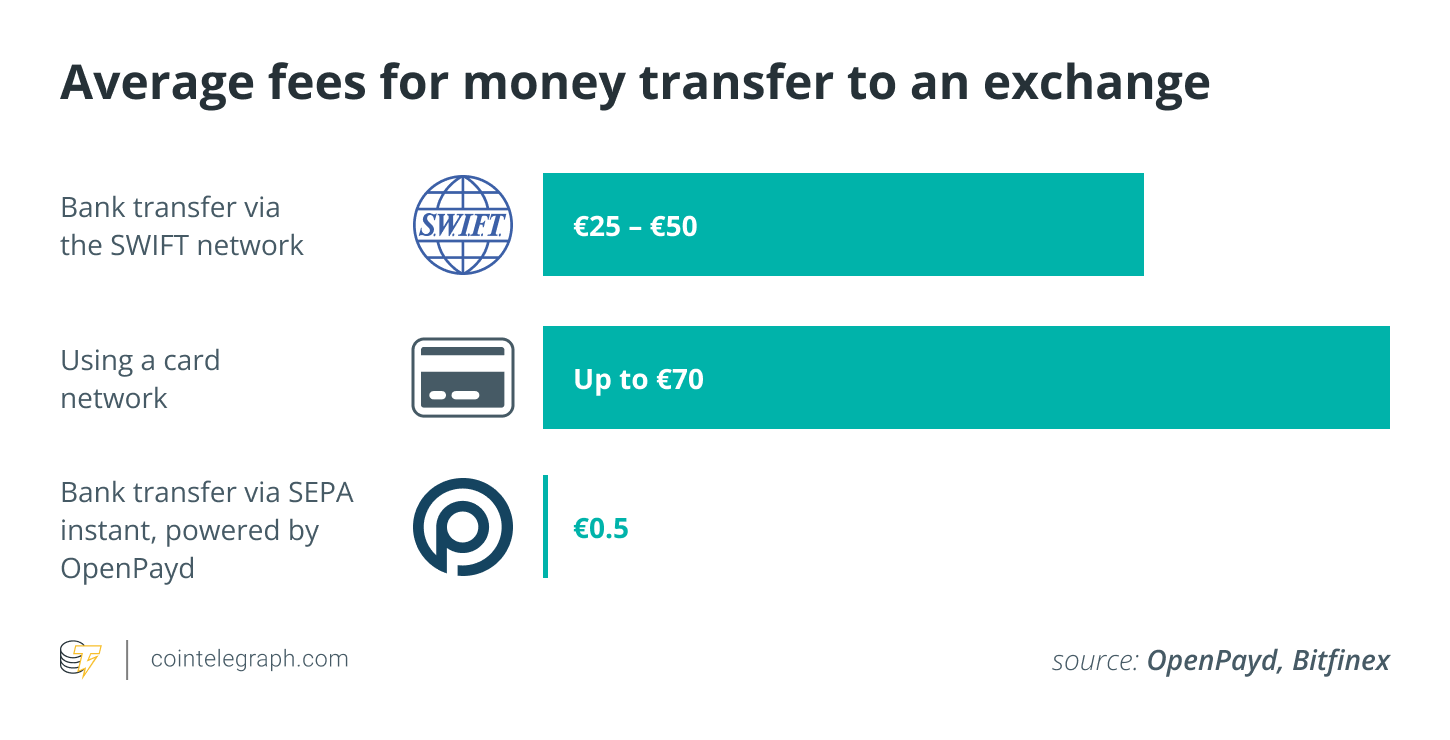Being in crypto is all about taking an intelligent view towards money. We know that Bitcoin (BTC) is the future, both as a store of value and also as a means of payment, as layer 2 solutions such as the Lightning Network begin to flourish. It is, therefore, vital that every cryptocurrency user makes sure that they always obtain the most competitive price for every service. While millions of crypto users convert fiat to crypto using a debit or credit card, this is by no means a low-cost choice.
Paying the overhead: Converting fiat to crypto
According to The Motley Fool, people who are using credit cards to pay for crypto purchases may be subject to at least 7% in extra fees. For example, if you were to purchase $1,000 in Bitcoin using a credit card, you could pay up to $70 in fees if your card issuer was to treat the transaction as a cash advance, on top of the standard processing fees and charges.
While cryptocurrencies are globally accessible, one of the biggest barriers to mainstream adoption of cryptocurrencies is not the acceptance of digital assets but, rather, bridging the gap between the crypto and fiat worlds. The failure to do so has meant that the majority of individuals have lacked the tools required to engage with digital currencies or have been met with exorbitant costs in interacting with the ecosystem.
An investor or user of cryptocurrency can execute a wide variety of cryptocurrency transactions, each of which comes with its own cost structure. The cost of any given crypto transaction can change regularly and on short notice, which means users must be diligent on checking those fees — an action that is time-consuming and less than ideal when moving in and out of positions quickly.
We live in an age where so-called disruptive fintech services and applications, such as the digital banking services app Revolut, are creating a seamless banking experience. Still, when it comes to converting fiat to crypto, users are being stung by expensive clunky solutions more akin to cashing in chips at a casino than purchasing the future form of money.
Related: ‘I’ve never paid with crypto before’: How digital assets make a difference amid a war
Exchanges combatting on-ramp fees
Exchanges such as Bitfinex are integrating innovative solutions into their platforms to make converting fiat into crypto cheap and efficient. In a collaboration with OpenPayd, a digital provider of banking and payment solutions, Bitfinex enables its users to transfer fiat currency from their bank account onto the Bitfinex platform at a cost of just 50 euro cents per transaction. At the moment, the service is only available for euros, but the exchange plans to roll it out to other major cryptocurrencies.

Other exchanges are also trying to make purchasing crypto less costly by launching a software development toolkits that will give self-custodial wallets such as MetaMask the ability to offer users a new way to purchase or transfer crypto to a wallet. This aims to streamline the onboarding experience into Web3 for users and reduces the fees that users incur when moving existing crypto balances from their accounts to a self-custody wallet/DApp using these new types of services.
Related: An open invitation for women to join the Web3 movement
Reducing onboarding cost by replacing antiquated rails
With the advent of Web3 and cryptocurrencies, the result of these innovations in payments may very well confirm the 2017 prediction that the age of credit cards may be coming to an end. Major payment solutions and service providers such as FIS and BCB Group are also innovating new fiat-to-crypto solutions alongside younger startups like Fireblocks in order to introduce instant settlement networks between local currencies and stablecoins. These new innovations are likely to turn the antiquated payments infrastructure on its head as a new crop of solutions become available for all businesses that are set to touch cryptocurrencies in one way or another in the coming decades.
As retail and institutional money continue to pile into the cryptocurrency markets, almost every major company has its eyes set on streamlining the onboarding experience and making crypto payments more secure, accessible and instantaneous. In doing so, these companies will reduce overheads for businesses that can then pass on savings to customers. Charging high fees just to move fiat currency in and out of the crypto ecosystem is an unnecessary obstacle for investors. The fiat on-ramps and off-ramps that exchanges are using play a vital role in onboarding new investors to the crypto and Web3 ecosystem.
This article does not contain investment advice or recommendations. Every investment and trading move involves risk, and readers should conduct their own research when making a decision.
The views, thoughts and opinions expressed here are the author’s alone and do not necessarily reflect or represent the views and opinions of Cointelegraph.
Paolo Ardoino joined Bitfinex at the beginning of 2015 and now serves as its chief technology officer. After graduating from Genoa’s Computer Science University in 2008, he started working as a researcher for a military project focused on high-availability, self-recovering networks and cryptography. Interested in finance, Paolo began developing financial related applications in 2010 and founded Fincluster in late 2013. Backed by two financing investment rounds, Fincluster delivered an advanced, modern and accessible web platform serving different clients with customization capabilities.




